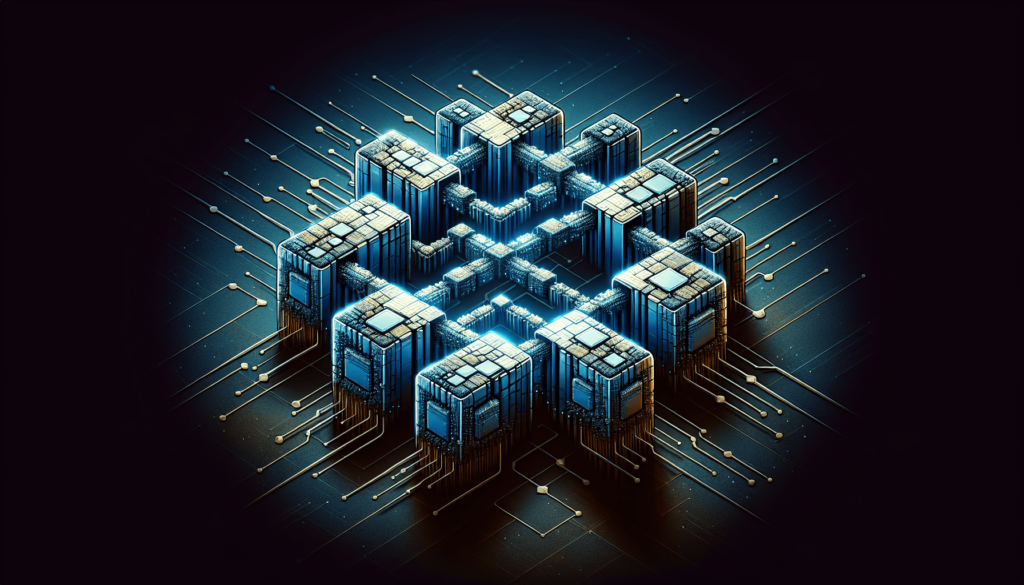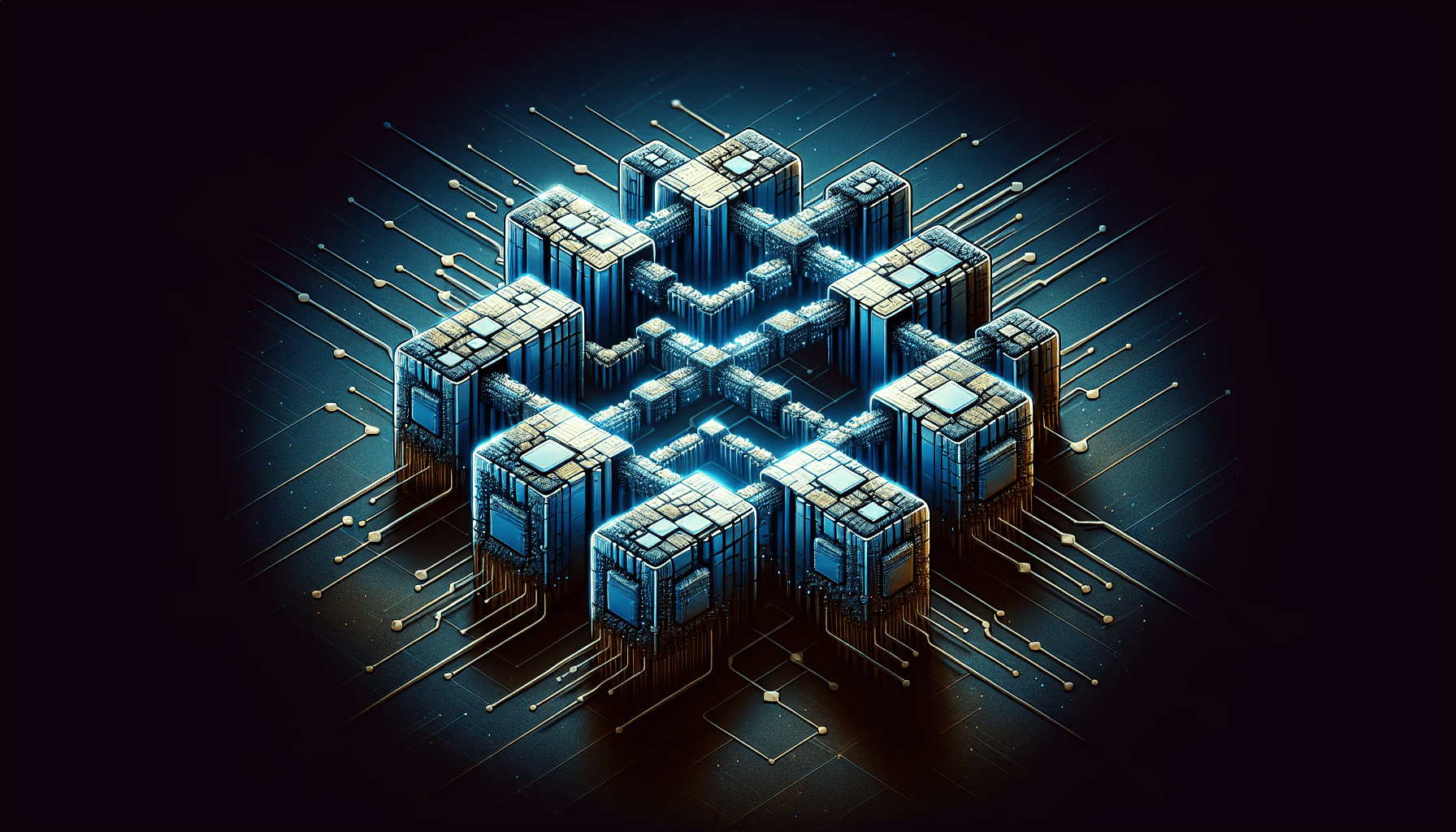Understanding Blockchain Technology” delves into the intricate yet fascinating world of blockchain, unraveling the complexities and making it comprehensible for everyone. In this insightful article, you’ll explore what blockchain is, how it works, and the transformative impact it has on various industries. From its foundational concepts to practical applications, you’ll gain a clear and concise understanding of why blockchain is considered such a revolutionary technology. Whether you’re a tech enthusiast or simply curious, this guide will equip you with the knowledge to navigate the future of digital innovation. Have you ever wondered what all the fuss about blockchain technology is? You might have heard about Bitcoin, cryptocurrency, and decentralized finance, but what ties all those things together is blockchain. Understanding blockchain technology can seem intimidating at first, but once you break it down, it’s both fascinating and accessible.

What is Blockchain Technology?
Blockchain is a decentralized digital ledger that records transactions across multiple computers. This ensures that the recorded transactions cannot be altered retroactively. But blockchain isn’t just for cryptocurrencies; it has potential applications spanning various industries such as healthcare, finance, and supply chain management.
The technology operates on a peer-to-peer network where each participant maintains a copy of the digital ledger. This decentralization ensures transparency and security.
Key Components of Blockchain
To grasp the full picture, let’s dissect the primary components of blockchain technology:
| Component | Description |
|---|---|
| Blocks | Units that store data in a blockchain. Each block contains a list of transactions. |
| Nodes | Individual computers that participate in the blockchain network. |
| Miners | Specialized nodes that validate and add new transactions to the blockchain. |
| Consensus Mechanisms | Methods (like Proof-of-Work or Proof-of-Stake) to achieve agreement on the blockchain’s state. |
| Cryptographic Hash Functions | Algorithms for ensuring data integrity and security. |
Each component plays a vital role in ensuring that the blockchain remains secure, transparent, and decentralized.
How Does Blockchain Work?
Understanding how blockchain technology works requires a look at the processes involved in creating and verifying blocks. Let’s focus on three fundamental aspects: transactions, mining, and adding blocks.
Transactions
Transactions are the heart of any blockchain network. Whenever you send cryptocurrency or record a change in a transaction, it becomes a part of a transaction pool. Each transaction contains:
- Sender Information: Public address and digital signature.
- Recipient Information: Public address.
- Transaction Data: Amount, timestamp, etc.
Mining
Mining is the process of validating transactions and adding them to the blockchain. This involves solving complex mathematical problems to find a unique hash value for the block. Miners are rewarded with cryptocurrency for their efforts. There are different consensus mechanisms impacting how mining works:
- Proof-of-Work (PoW): Miners solve intricate puzzles.
- Proof-of-Stake (PoS): Validators are chosen based on the number of coins they hold and are willing to “stake” as collateral.
Adding Blocks
Once a block is mined, it is broadcasted to the network for verification. Nodes validate the block based on the consensus rules, and if accepted, the block is added to the blockchain. The updated blockchain is then distributed to all nodes in the network.
Advantages of Blockchain Technology
Blockchain brings several advantages, aligning with transparency, security, and efficiency.
Transparency
The decentralized nature of blockchain ensures that each participant has access to a copy of the ledger. Any changes or additions are visible to all participants, making it nearly impossible to manipulate the data without detection.
Security
The cryptographic algorithms used in blockchain make it highly secure. Each block is linked to the previous block via a unique hash, forming an unbreakable chain. Altering any block would require changing the hash of all subsequent blocks, a nearly impossible task.
Efficiency
Blockchain eliminates the need for intermediaries such as banks or brokers, drastically reducing transaction times and costs. Smart contracts—self-executing contracts with the terms directly written into code—further increase efficiency by automating processes.
Immutability
Once recorded, data in a blockchain cannot be altered without changing all subsequent blocks, which requires majority consent from the network. This makes blockchain an ideal solution for record-keeping and traceability.
Practical Applications
Blockchain technology is more than just a backbone for digital currencies. Its applications are broad and transformative.
Supply Chain Management
In supply chain management, blockchain can help track products from the point of origin to the consumer, ensuring transparency and reducing fraud. For example, Walmart uses blockchain to enhance food traceability, ensuring that the products meet safety standards.
Healthcare
Blockchain can secure patient data, allowing multiple healthcare providers to access a single, verified source of truth. This improves patient outcomes and reduces administrative burdens. MIT’s MedRec project is a good example of blockchain’s potential in the medical field.
Finance
In the realm of finance, blockchain can enable faster and cheaper transactions, reduce fraud, and eliminate the need for intermediaries. Decentralized Finance (DeFi) platforms leverage blockchain to offer financial services without traditional banks.
Real Estate
Blockchain can simplify real estate transactions by eliminating the need for paper-based record-keeping systems. Smart contracts can automate property transfers, reducing the time and cost involved.
Voting Systems
Secure and transparent voting systems are crucial for democracy. Blockchain can make voting tamper-proof through immutable records, allowing for secure and transparent elections.

Challenges and Limitations
Despite its advantages, blockchain is not without its challenges.
Scalability
Current blockchain networks can become sluggish as transaction volume increases. Solutions like the Lightning Network for Bitcoin and Ethereum’s transition to Proof-of-Stake aim to address scalability issues.
Energy Consumption
Mining, especially under Proof-of-Work, consumes a significant amount of energy. This has led to environmental concerns, prompting a push towards more energy-efficient consensus mechanisms.
Regulation
The decentralized nature of blockchain poses regulatory challenges. Governments around the world are grappling with how to manage and regulate blockchain-based activities without stifling innovation.
Interoperability
Different blockchain platforms often operate in silos. Interoperability solutions are needed to allow various blockchains to communicate effectively with each other.
The Future of Blockchain
The future of blockchain is promising but filled with uncertainties. Trends suggest increased adoption across multiple sectors, as well as technological advancements aimed at solving current limitations.
Trend Towards Regulation
As blockchain technology matures, regulatory frameworks are likely to follow. Proper regulation can lend credibility and foster wider adoption, but overregulation could stifle innovation.
Technological Advancements
Advancements in consensus algorithms, scalability solutions, and cross-chain interoperability will drive the technology forward. Quantum computing poses both a threat and an opportunity for blockchain security and efficiency.
Increased Adoption
As awareness and understanding grow, more industries will likely adopt blockchain technology for various use cases, potentially transforming business operations and even day-to-day activities.
Integration with Emerging Technologies
Blockchain is likely to merge with other emerging technologies like Artificial Intelligence (AI) and the Internet of Things (IoT). This integration could create more autonomous, secure, and efficient systems.
Conclusion
Understanding blockchain technology is no longer an optional skill but a necessity in our increasingly digital world. This technology promises to revolutionize various sectors by providing transparent, secure, and efficient solutions. While challenges remain, ongoing advancements and growing adoption make it a technology worth watching.
So, the next time you hear about blockchain, cryptocurrency, or digital ledgers, you’ll have a clearer understanding of what they are and how they work. Just remember, blockchain is more than just the tech behind Bitcoin; it’s a transformative technology shaping the future.

